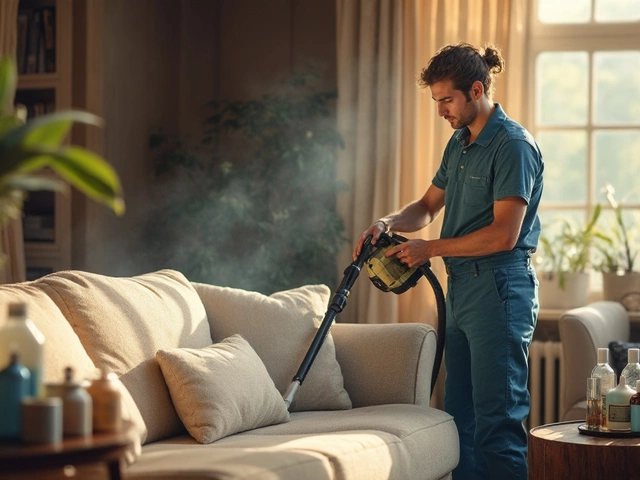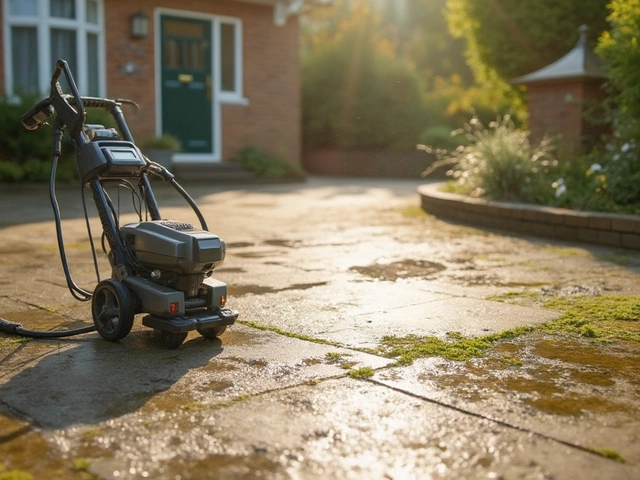Non-Washable Cleaning: Practical Guides for Tough Surfaces
When tackling Non-Washable Cleaning, the process of removing grime from items that can’t be simply rinsed or thrown into a washing machine. Also known as hard‑surface cleaning, it often requires specialised tools, safe chemicals or clever DIY mixes. This field non-washable cleaning encompasses many sub‑tasks, from Oven Cleaning, removing baked‑on grease without damaging heating elements to Window Cleaning, clearing stubborn mineral deposits without scratching glass. It also includes Pressure Washing Alternatives, gentler methods that protect delicate surfaces and Eco‑Friendly Cleaning, using biodegradable products that are safe for home and planet. Together these parts create a holistic approach: non‑washable cleaning requires the right technique, the right product, and an awareness of surface limits.
Why Traditional Washing Often Fails
Many households reach for a hose or a dishwasher when they see tough grime, but that’s a mistake for ovens, sealed glass or mineral‑coated tiles. Traditional washing can seep into seams, cause rust, or leave streaks that are hard to remove later. Instead, understanding the material—whether it’s enamel, ceramic, or coated glass—guides you to the proper method. For example, a baked‑on oven spill needs a low‑heat, alkaline paste rather than a high‑pressure spray that could warp the door seal. Likewise, hard‑water stains on windows dissolve best with mild acids like vinegar, not abrasive scrubbing that can etch the glass. By matching the cleaning strategy to the surface’s properties, you protect durability and achieve a cleaner finish.
Eco‑friendly cleaning plays a big role in non‑washable scenarios. Products such as baking soda, lemon juice, or plant‑based surfactants break down grease and mineral deposits without harsh chemicals that could damage seals or leave residues. These ingredients are also safe around food‑preparation areas, making them ideal for kitchen appliances. When you combine a natural cleaner with the right tool—a soft microfiber cloth for ovens, a squeegee for windows, or a low‑pressure sprayer for exterior surfaces—you get results that rival professional services but at a fraction of the cost.
DIY recipes are another cornerstone of this niche. A simple mix of baking soda and water creates a paste that, left to sit, lifts stubborn oven grime without scrubbing. For windows, a solution of one part vinegar to three parts water applied with a spray bottle and wiped with a lint‑free cloth clears cloudy spots efficiently. These formulas are highlighted across our collection, showing you step‑by‑step ways to restore shine without risking damage. The common thread is using the least aggressive method that still gets the job done, preserving the lifespan of appliances and fixtures.
Beyond the kitchen and bathroom, non‑washable cleaning extends to commercial settings like restaurant kitchens, office break rooms, and rental properties. Landlords often grapple with wear‑and‑tear versus limescale buildup; understanding how to differentiate them saves money on unnecessary replacements. Our posts on “Wear and Tear Expenses” and “Limescale vs Wear and Tear” unpack those nuances, giving you the knowledge to maintain assets effectively. Whether you’re a DIY enthusiast or a professional cleaner, the principles stay the same: identify the material, choose the right eco‑friendly agent, and apply the appropriate technique.
Ready to dive deeper? Below you’ll find a curated list of articles that walk you through each facet of non‑washable cleaning— from powerful homemade oven cleaners to safe window‑washing tricks, from alternatives to high‑pressure blasting to budgeting for professional services. Each guide is packed with practical tips, safety advice, and step‑by‑step instructions to help you master the art of cleaning the things you can’t just toss into a wash.





